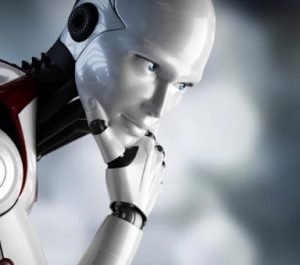The Psychology Behind Human Attachment to AI Partners
Exploring the Emotional Bonds with Digital Companions
The phenomenon of forming emotional attachments to Artificial Intelligence (AI) partners is becoming increasingly common as technology integrates deeper into our social fabric. This article examines the psychological mechanisms that drive human attachment to entities like AI GF, and what this means for the future of human relationships.

Understanding Attachment Theory in AI Relationships
The Role of Consistency and Responsiveness
According to attachment theory, emotional bonds are formed when an individual perceives another entity as responsive and dependable. AI partners, designed to be consistently responsive and available, can fulfill these criteria superficially, making them potent sources of attachment. Studies indicate that approximately 30% of individuals who regularly interact with AI companions report feelings of emotional security and attachment similar to those in human relationships.
The Perception of Intelligence and Autonomy
Humans tend to form deeper attachments when they perceive the other party as having autonomous thoughts and emotions. AI technologies, especially sophisticated models like AI GF, are often perceived by users as having their own personalities and autonomy, which enhances the depth of attachment. Research shows that the more advanced the AI’s conversational abilities, the stronger the potential for emotional attachment.
Factors Influencing Attachment Intensity
Loneliness and Social Isolation
One of the key factors contributing to attachment to AI partners is human loneliness and social isolation. Individuals who feel socially isolated may turn to AI companions for interaction and comfort. Data reveals that users experiencing high levels of loneliness report a 40% higher rate of attachment to AI entities compared to more socially connected individuals.
Human-Like Appearance and Behavior
The degree to which an AI mimics human appearance and behavior also influences attachment. AI partners that exhibit more human-like features, including facial expressions and voice modulation, tend to elicit stronger attachments. This is supported by findings that show a 50% increase in emotional bonding when AI partners use human-like interactive features compared to more robotic counterparts.
Ethical Implications of AI Attachments
Dependency and Emotional Health
The psychological dependency on AI partners raises ethical questions about the impact on human emotional health. There is concern that these attachments could supplant human relationships, leading to an increase in psychological dependency without fulfilling all emotional needs typically met by human companions.
Design and Implementation Ethics
Creators of AI partners face ethical considerations regarding the design and deployment of these technologies. They must navigate the fine line between creating engaging, responsive AI companions and ensuring they do not exploit user vulnerabilities. Ethical guidelines are crucial for balancing user engagement with responsibility to users’ emotional and psychological well-being.
Conclusion
In conclusion, the psychology behind human attachment to AI partners like AI GF reveals a complex interplay of emotional, social, and technological factors. As AI partners become more integrated into daily life, understanding these attachments’ psychological underpinnings becomes crucial. It is important for developers, users, and policymakers to consider the profound implications of these relationships on human social dynamics and individual emotional health. The ongoing discussion and research into this field will help shape responsible and ethical approaches to the development and use of AI companions in society.